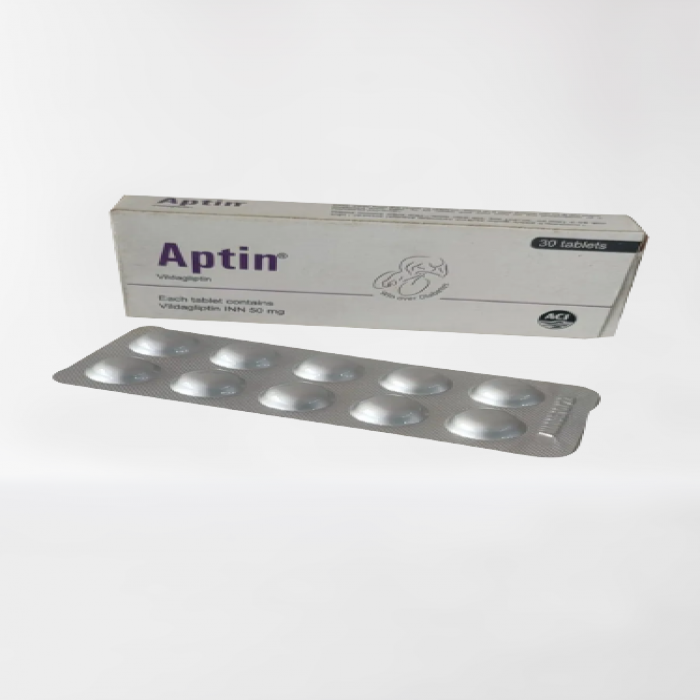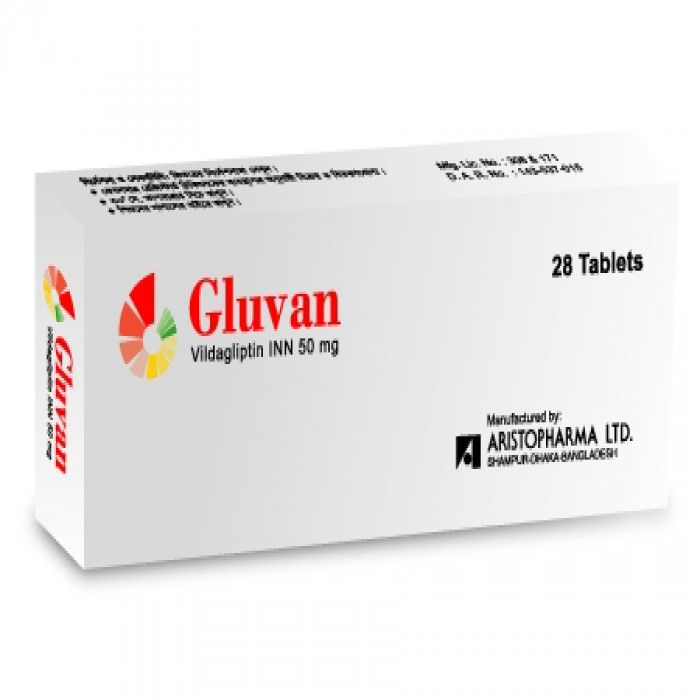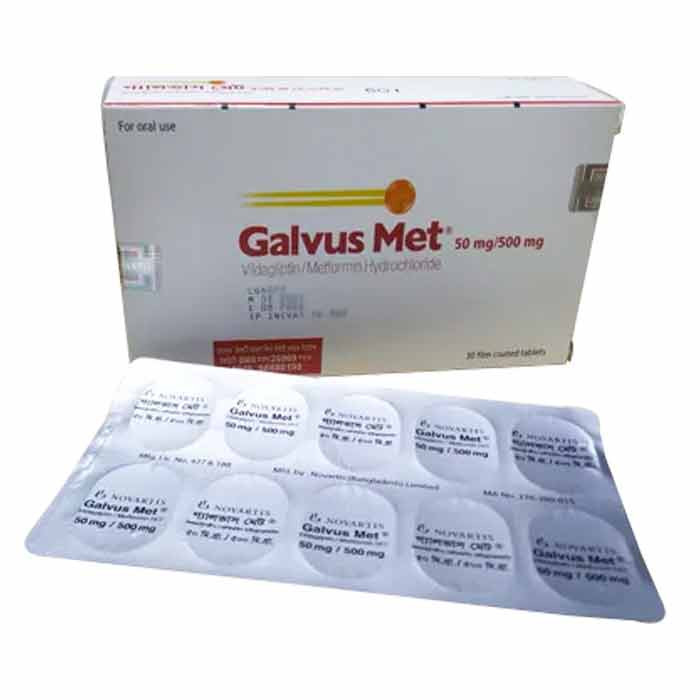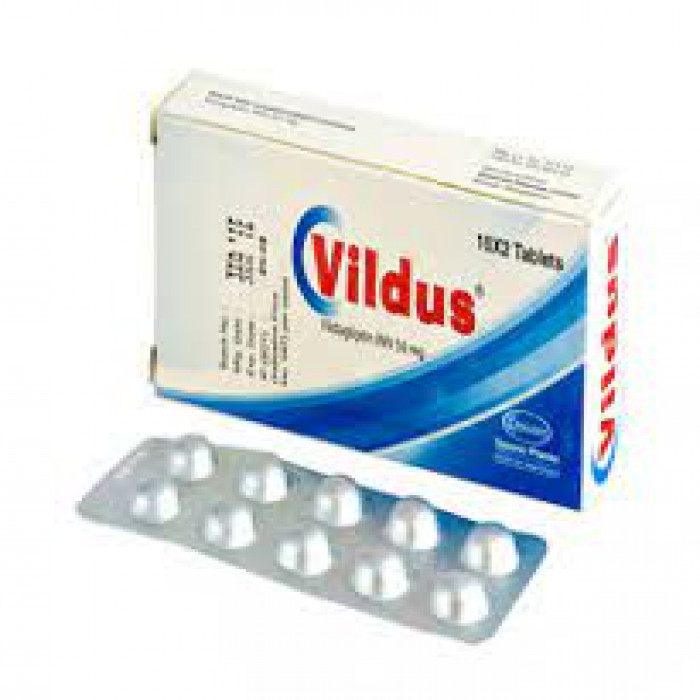
✔ 100% Authentic Product
👁️ Currently Viewing 1429
Generic Name: Vildagliptin 50mg,
Manufacturer: ACI Limited.
Discount
Price: ৳ 188
MRP:
৳
200
6%
Off

100% Genuine Products, Guaranteed

Safe & Secure Payments, Always

Fast, Secure & Efficient Delivery

Proper Packaging
 Cash on Delivery - All over Bangladesh
Cash on Delivery - All over Bangladesh Regular Delivery - 12-24 Hours, Dhaka City* Charge Tk.39-59
Regular Delivery - 12-24 Hours, Dhaka City* Charge Tk.39-59 Regular Delivery - 24-48 Hours, Other Cities* Charge Tk.99-110
Regular Delivery - 24-48 Hours, Other Cities* Charge Tk.99-110
 ফ্রি ডেলিভারিঃ - ৯৯৯ টাকা+ অর্ডারে, ঢাকা
শহরে
ফ্রি ডেলিভারিঃ - ৯৯৯ টাকা+ অর্ডারে, ঢাকা
শহরে ফ্রি ডেলিভারিঃ - ২৯৯৯ টাকা+ অর্ডারে, ঢাকার
বাহিরে
ফ্রি ডেলিভারিঃ - ২৯৯৯ টাকা+ অর্ডারে, ঢাকার
বাহিরে
100% Genuine Products, Guaranteed
Safe & Secure Payments, Always
Fast, Secure & Efficient Delivery
Proper Packaging
 Cash on Delivery - All over Bangladesh
Cash on Delivery - All over Bangladesh Regular Delivery - 12-24 Hours, Dhaka City* Charge Tk.39-59
Regular Delivery - 12-24 Hours, Dhaka City* Charge Tk.39-59 Regular Delivery - 24-48 Hours, Other Cities* Charge Tk.99-110
Regular Delivery - 24-48 Hours, Other Cities* Charge Tk.99-110 ফ্রি ডেলিভারিঃ - ৯৯৯ টাকা+ অর্ডারে, ঢাকা
শহরে
ফ্রি ডেলিভারিঃ - ৯৯৯ টাকা+ অর্ডারে, ঢাকা
শহরে ফ্রি ডেলিভারিঃ - ২৯৯৯ টাকা+ অর্ডারে, ঢাকার
বাহিরে
ফ্রি ডেলিভারিঃ - ২৯৯৯ টাকা+ অর্ডারে, ঢাকার
বাহিরে
✅ Description:
Indications
Vildagliptin is indicated as an adjunct to diet and exercise to improve glycemic control in patients with type 2 diabetes mellitus as monotherapy and in dual combination with Metformin, a Sulphonylurea, a Thiazolidinedione, or Insulin when diet, exercise, and a single antidiabetic agent do not result in adequate glycemic control.
Pharmacology
Vildagliptin is a dipeptidyl peptidase-4 (DPP-4) inhibitor, which is believed to exert its actions in patients with type 2 diabetes by slowing the inactivation of incretin hormones. Incretin hormones, including glucagon-like peptide-1 (GLP-1) and glucose-dependent insulinotropic polypeptide (GIP), are released by the intestine throughout the day, and levels are increased in response to a meal. These hormones are rapidly inactivated by the enzyme, DPP-4. The incretins are part of an endogenous system involved in the physiologic regulation of glucose homeostasis. When blood glucose concentrations are normal or elevated, GLP-1 and GIP increase insulin synthesis and release from pancreatic beta cells by intracellular signaling pathways involving cyclic AMP. GLP-1 also lowers glucagon secretion from pancreatic alpha cells, leading to reduced hepatic glucose production. By increasing and prolonging active incretin levels, Vildagliptin increases insulin release and decreases glucagon levels in the circulation in a glucose-dependent manner.
Dosage & Administration
The recommended dose of Vildagliptin is-
- 50 mg or 100 mg daily for monotherapy.
- 50 mg twice daily (morning and evening) when used in dual combination with Metformin or a Thiazolidinedione;
- 50 mg once daily in the morning when used in dual combination with Sulphonylurea.
Vildagliptin may be taken with or without a meal. No dosage adjustment is required in the elderly, or in patients with mild renal impairment.
Pediatric use: Vildagliptin is not recommended in patients 18 years of age.
Interactions
In pharmacokinetic studies, no interactions were seen with pioglitazone, metformin, glibenclamide, digoxin, warfarin, amlodipine, ramipril, valsartan, or simvastatin. As with other oral antidiabetic medicinal products, the glucose-lowering effect of Vildagliptin may be reduced by certain active substances, including thiazides, corticosteroids, thyroid products, and sympathomimetics.
Contraindications
Vildagliptin is contraindicated in patients with:
Patients with moderate to severe renal impairment
Patients with type 1 diabetes
Hypersensitivity to the active substance or to any of the excipients
Patients with Hepatic Impairment: Patients with pre-treatment alanine aminotransferase (ALT) or aspartate aminotransferase (AST) >3 times the upper limit of normal (ULN).
Side-Effects
The majority of adverse reactions were mild and transient, not requiring treatment discontinuations. A rare case of hepatic dysfunction is seen. Clinical trials of up to and more than 2 years duration did not show any additional safety signals or unforeseen risks when using this combination.
Pregnancy
There are no adequate data on the use of Vildagliptin in pregnant women; hence the potential risk for humans is unknown.
Precautions
Caution should be exercised in patients aged 75 years and older due to limited clinical experience. It is recommended that LFTs are monitored prior to initiation of Vildagliptin, at three-monthly intervals in the first year and periodically thereafter. If transaminase levels are increased, patients should be monitored with a second liver function evaluation to confirm the finding and be followed thereafter with frequent liver function tests until the abnormality returns to normal. If AST or ALT persists at 3xULN, Vildagliptin treatment should be stopped. Patients who develop jaundice or other signs of liver dysfunction should discontinue Vildagliptin. Following the withdrawal of treatment with Vildagliptin and LFT normalization, treatment with Vildagliptin should not be reinitiated. Due to limited clinical experience, use with caution in patients with congestive heart failure of New York Heart Association (NYHA) functional class I-II, and do not use in patients with NYHA functional class III-IV. Vildagliptin is not recommended in patients with moderate to severe renal impairment.
Storage Conditions
Store below 30°C temperature & keep away from light & moisture. Keep out of reach of children.
⚠️Disclaimer:
At ePharma, we’re committed to providing accurate and accessible health information. However, all content is intended for informational purposes only and should not replace medical advice from a qualified physician. Please consult your healthcare provider for personalized guidance. We aim to support, not substitute, the doctor-patient relationship.











